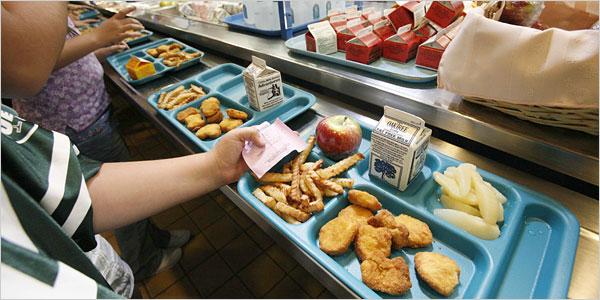
Posted on February 24, 2019
As I listened while driving in a somewhat distracted state to a news report about the Oakland teacher strike last week, a number caught my ear: 40%.
Were the teachers seeking a 40% raise? Were only 40% of the teachers planning to strike? Were 40% of the students expected to stay home?
Turns out, 40% referred to the percentage of Oakland school children, grades Kindergarten through 12thgrade, who rely on the school district’s free meal program.
40%? In Oakland?
As it turns out, 40% is only a fraction of the story – and only part of the full problem.
According to the Oakland Unified School District (ousd.org), 73.4% of its 36,000 students are eligible for free or reduced-cost meals. The district currently serves, as part of the federal-assisted National School Lunch Program (NSLP), 9,700 free and reduced-cost breakfasts, 18,000 such lunches and 10,000 snacks every school day. Until this year, the district had also served dinners on school days. (The program was cancelled due to a budget shortfall.)
These meals are provided to stave off hunger of school-aged children. At least on school days.
To be eligible for a free or reduced-cost meal, annual income for a family of 4 must be at or below $46,435. This is based on the official ‘poverty’ level set by the government of $25,100 for a family of 4 (federalregister.gov).
According to the Nationwide School Nutrition Association (schoolnutrition.org), on every school day across the United States:
Let’s put this in some perspective. According to the National Center for Education Statistics (nces.ed.gov), approximately 56.6 million children were attending U.S. public schools in Fall 2018. Therefore, roughly 22% of them received free or reduced-cost breakfasts and about 39% received free or reduced-cost lunches. So, it’s not just Oakland. It’s everywhere.
When you consider the possibility – the likelihood– that children would go hungry without these meals, these numbers are staggering. And sobering.
It’s also sobering to consider that approximately 40% of families with school-aged children in this country live at or near the poverty level. When did we end the war on poverty? Is it any wonder why many throughout the country believe our ‘roaring’ economy is either a myth or has just passed them by? Especially among those earning minimum wage.
To combat hunger among school-aged children, New York City recently implemented an aggressive program to provide free breakfasts and lunches every school day to all students 18 years and younger. The program has 2 important goals:
New York City didn’t stop there. Its Summer Meals Program offers free breakfasts and lunches to anyone in the city 18 years and younger every day throughout the summer months. No identification is required and there is no need to be an enrolled student.
Ensuring that school-aged children are fed and ready to learn is not unique to the United States. Sweden, Finland, Estonia and India provide free meals to all students every day school is in session.
We know hunger abounds and that it is nearly everywhere we look. That so many children are in need of our help is depressing and worth our pausing to consider possible remedies. Maybe we provide greater funding to local food banks. Maybe more federal and/or state monies should be directed to provide nutritious meals to all public-school students. Maybe corporations should adopt local schools and support their meals program. Maybe employees – especially those who enjoy free food at work – should pool the money they don’t spend on food and donate to a local school. Maybe professional sports teams might dedicate a small portion of their vast profits to help feed the young. Maybe we follow New York City’s lead and feed every child in need every day. Maybe, together, we – government, corporations and individuals – do the right thing and end hunger in this country. At least among children.
We can do this. More importantly, we should do this.
Leave a Reply